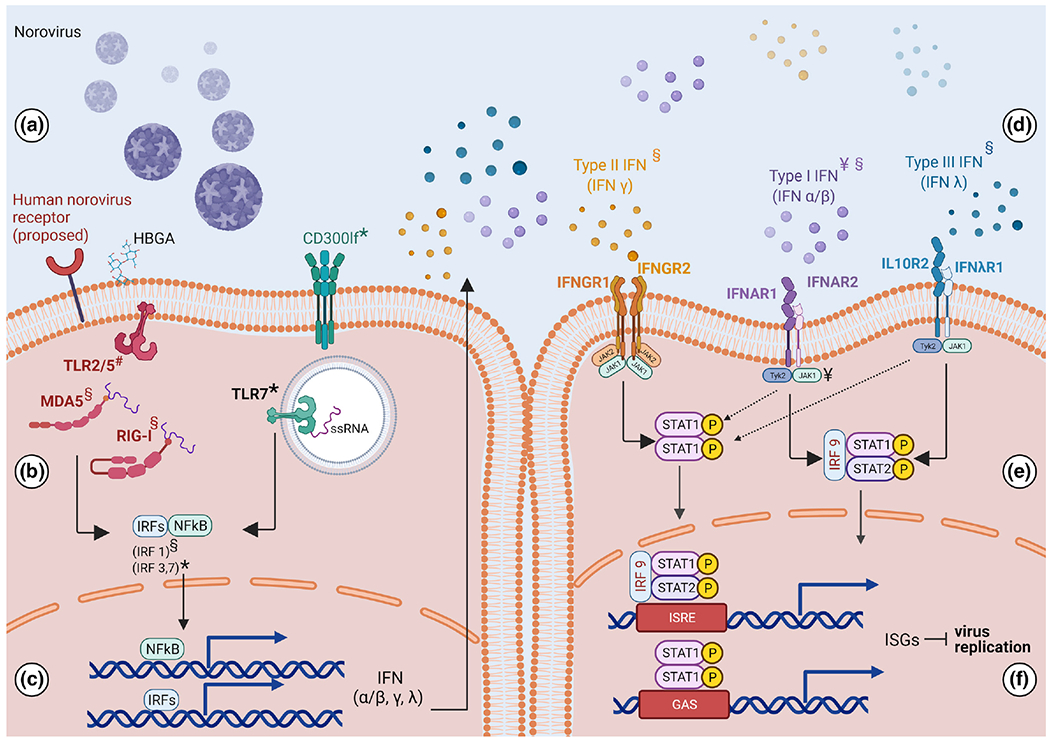Fig. 1.

The antiviral response in norovirus-infected cells. Norovirus infection induces an antiviral response that restricts virus replication. a. Human norovirus attachment is facilitated by human blood group antigens (HBGA) and a receptor that is yet to be identified. In mice the receptor is CD300lf [66]. b. Viral entry results in sensing of the virus and viral components by molecular sensors. The molecular sensors that are triggered during human norovirus infection have not been identified, however human norovirus virus-like particles (VLPs) have been shown to trigger TLR2 and TLR5 (70). MDA5 and RIG-I are also involved in the response against human norovirus [102] and TLR7 has been shown to trigger an antiviral response that protects against murine norovirus (MNV) [103]. c. Virus sensing results in activation of transcription factors including NFkB [103] and interferon regulatory factors IRF1(102), IRF3 and IRF7(3) which facilitate transcription of genes encoding type I, type II and type III interferon. d. Interferon is secreted and engages corresponding receptors on the cell surface, resulting in phosphorylation and activation of STAT1/2 through the JAK/STAT pathway [55]. e. STAT1/2 translocate to the nucleus and facilitate upregulation of hundreds of antiviral interferon stimulated genes (ISGs). f. The proteins encoded by antiviral ISGs restrict virus replication. This figure summarizes the immune components involved in the antiviral response to norovirus infection and includes findings from human norovirus infection as well as its surrogates: ¥human norovirus infection in human intestinal enteroids, *murine norovirus, # human norovirus virus like particles (VLPs), §human norovirus replicon. Created with BioRender.com (accessed on 12 October 2021).
